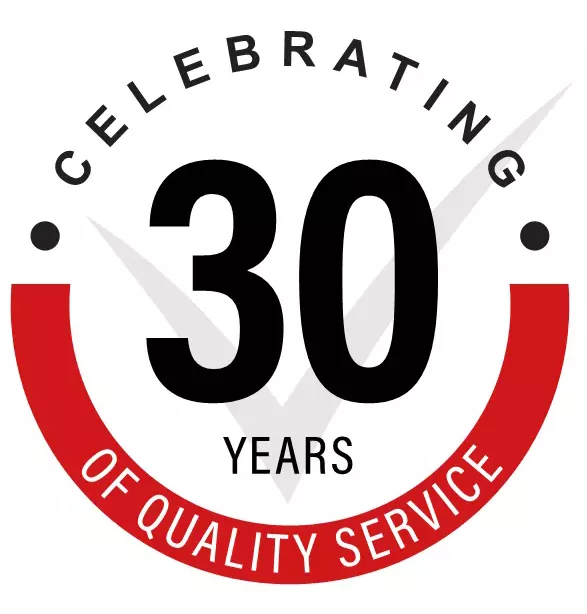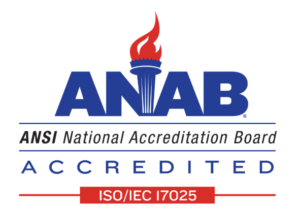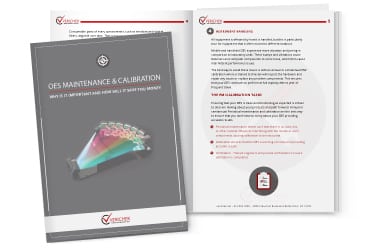RES stands for Rotrode Emission Spectrometer, which is a type of tool that is used to determine metals present in oil samples. It is a specific designation based on the size of the particles that the spectrometer can detect, typically the detection limits are between 3µ and 10µ.
Because RES is highly specialized, it can be difficult to fully understand its capabilities and when to choose it over other spectrometers. Given how effective and reliable it is, it is worth taking the time to better understand when it is a better option than other types of spectrometers.
 What It Is
What It Is
Oil analysis is required in many industries to determine the concentration of metal contamination, oil make up, and metal wear. The RES provides reliable results on the tiny particles that may be found in used oils and hydraulic fluids. The results do not require the oil or fluid to be diluted prior to beginning the analysis, which means the results are based on just the used liquid.
The need for such analysis is common across many industries that require maintenance of equipment that requires either oil or hydraulic fluids. The contamination of oil can damage equipment, but it may also be caused by the wear and tear of the machine itself. By monitoring the contamination of oils and hydraulic fluids, businesses can more accurately determine the life-cycle of the equipment and if they should switch to a different oil or fluid.
 How the RES Differs from OES
How the RES Differs from OES
Oil analysis is typically conducted by optical emission spectroscopy (OES), but they tend to be limited to particle size detection between 0.5µ and 2µ. They also require that the fluid be diluted prior to the analysis. While their results are still reliable, they may not meet the requirements of a particular regulation or recommendation.
Because it can detect particulars between 3µ and 10µ, the RES can provide critical data for machines where there are larger particles that could be doing more damage to the equipment. The particle level that the RES can detect does vary based on the metal being tested and how much surface oxidation is present on the surface.
 Compliance
Compliance
The RES complies with ASTM D6595-00, Standard Test Method for Determination of Wear Metals and Contaminants. This requirement applies to both used hydraulically fluids and used lubricating oils. The RES also meets the requirements for DoD JOPP.
 Range of Uses and Industries
Range of Uses and Industries
The monitoring of oil is critical to many different fields, some of which are less obvious than others. The benefits of having an RES in the auto and aviation industries is obvious as there is a need to test new cars, and ensure equipment is not wearing faster than expected (and contaminating the oil in higher levels than expected). Other industries are less obvious in their need for monitoring, such as railways, power plants, manufacturing, and the military.
Any industry that requires the use of oils (which is most industries) can benefit from either regular or occasional analysis. For industries where labs really are not required, experts can take samples and either perform the analysis on site or back in the lab, depending on your preference. This will give you the data you need to start ensuring your equipment and tools are not being adversely affected by contaminated oils. It will also help you determine if the wear of equipment is faster than expected.

Why It is Popular
Commonly found in labs where regular or detailed oil analysis is required, the RES has still changed considerably over the years, particularly as technology advances.
The GNR R3 ROTROIL, one of the newest models of RES, is not much wider than a common lab laptop. That makes it relatively easy to move if it is required in the field for analyses. Designed to be both reliable and durable, it is often used both inside and outside of labs, as needed, without sacrificing quality.
There are also two versions of the RES, one that is easy to transport and a more traditional model that is best left in the lab.
The larger model comes with its own PC for managing analysis and data, and it includes a touch screen for easier management of the data. For industries where regular in-lab analysis is likely to be the only need, the second model is better, and it is commonly used by those in the military.
Conclusion
The RES is a highly reliable and durable testing tool that can provide an additional level of analysis for any lab where oil analysis is required. They also require occasional maintenance to continue to provide reliable results.
Whether you are interested in purchasing a system, would like a professional team to complete the occasional requirement for such a specific need, or must have regular maintenance on your current system, we can provide the details for what to expect for each scenario. We can help you determine what service or system is right for your needs.



 OES MAINTENANCE & CALIBRATION:
OES MAINTENANCE & CALIBRATION: